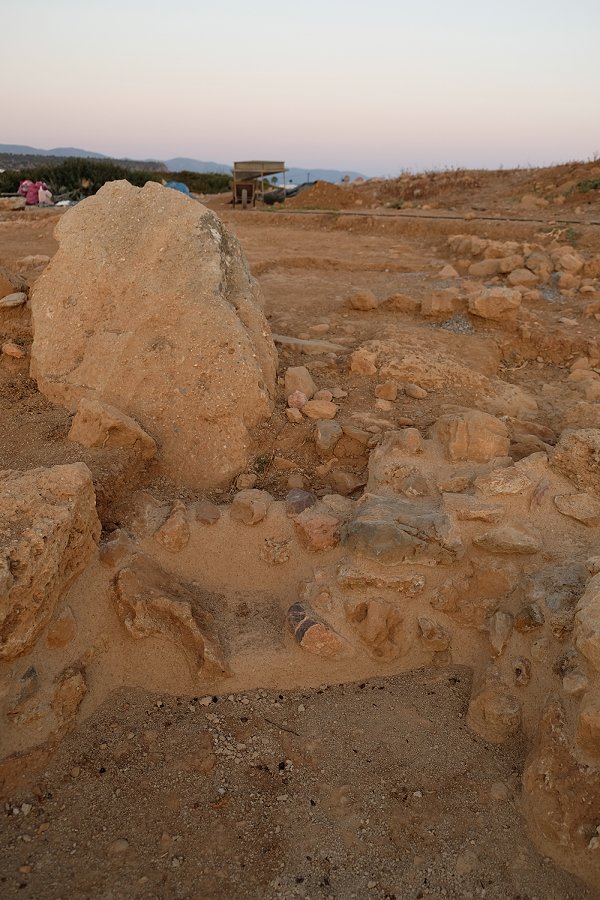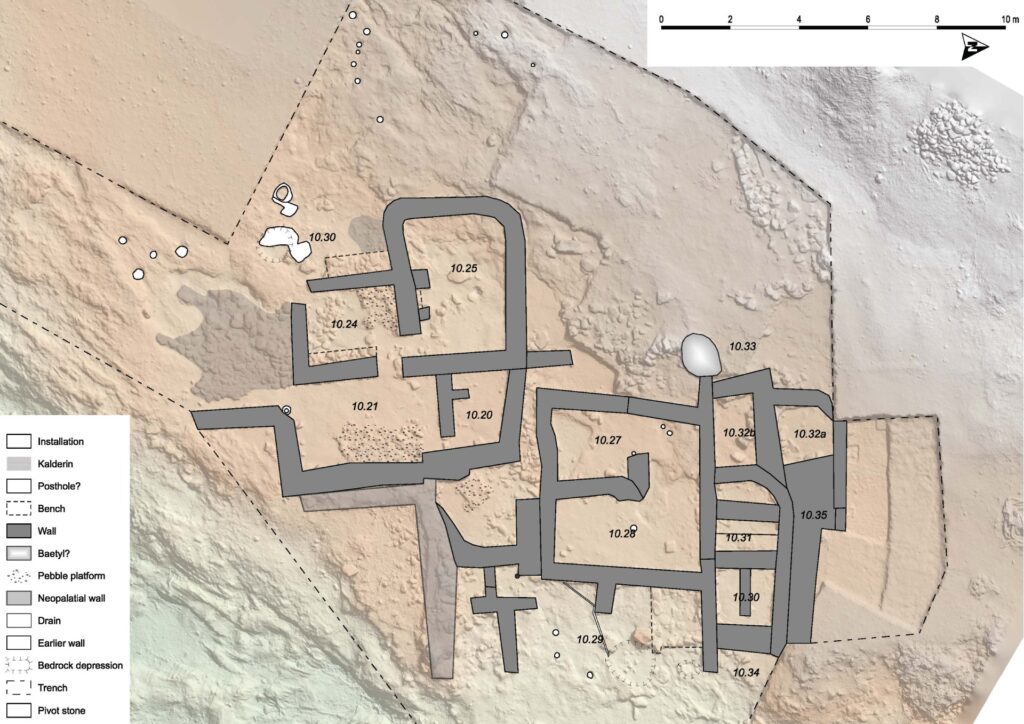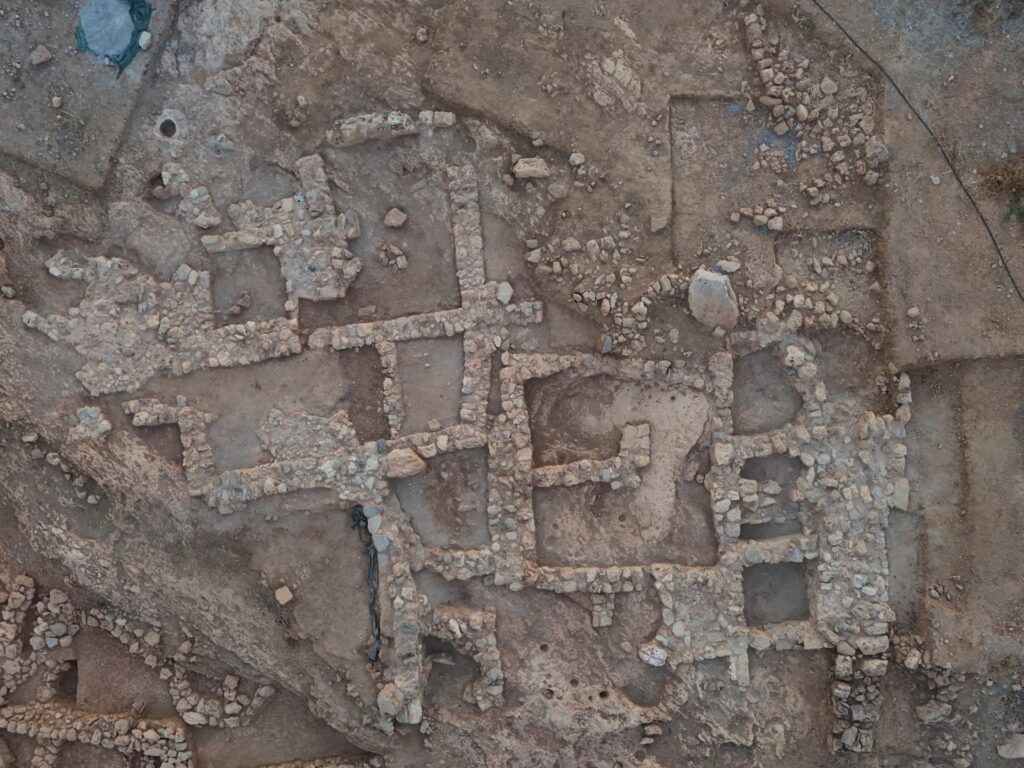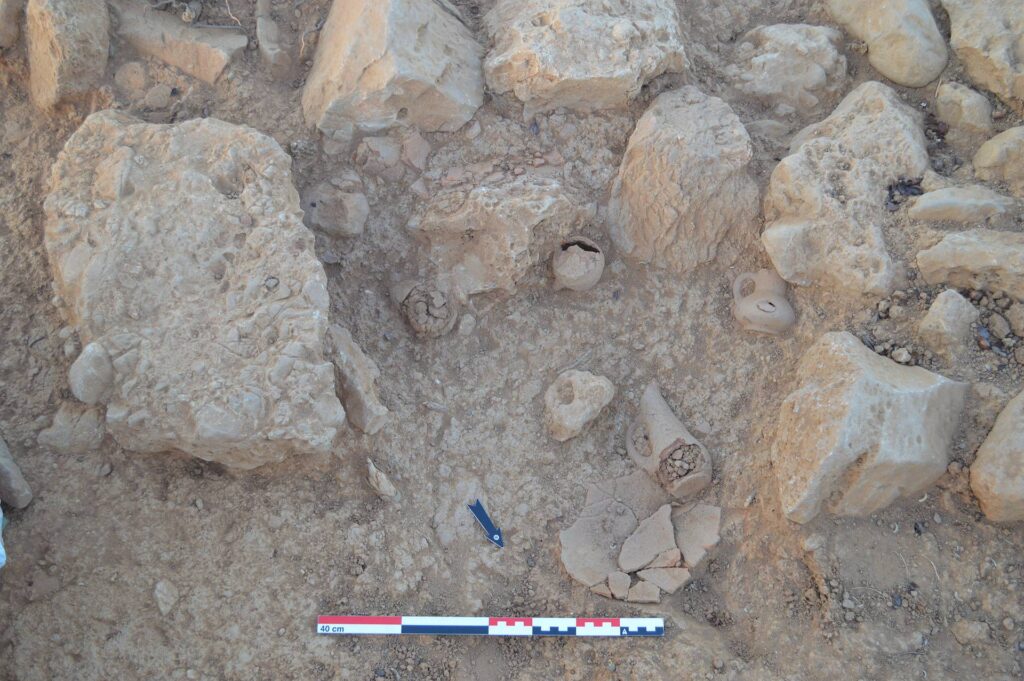Between Building CDE and the Court Building is a large flat area. Following prior geophysical work, we excavated and immediately struck architectural remains that date almost exclusively to the Prepalatial period, Early Minoan IIA. These Prepalatial remains are quite well preserved, which suggests that the Neopalatial structures were either placed much higher and did not preserve at all, or that there was no later occupation but an open West Court.
The latter is altogether more likely since northwest of the Prepalatial Houses a very large rock sticks out, originally perhaps standing but now tilted, around which we found several conical cups of the Neopalatial period (Figure 11).

Fig. 11 Baetyl
Was this rock some kind of baetyl, a sacred stone of a type well-known from Minoan ritual iconography? Such baetyls are, for example, also preserved to the southwest of the Gournia palace, within the Central Court at Malia and elsewhere. The stone is certainly not local to this specific spot and must have been intentionally placed here. The absence of remains later than EM IIA is intriguing, however, since it could imply that from EM IIB onwards, the area was left open.
Among the Prepalatial houses we distinguish between a South House and a North House. Although they have more or less the same orientation, size and number of rooms, they seem not to touch each other. The North House, which may have been built together with a sturdy fortification wall to its north, was found practically empty – just some sherds, a few obsidian blades and discarded stone tools. The South House, however, was found with its assemblages intact, including dozens of small cups and juglets (Figure 12), stone and obsidian tools and many goat horn cores. Such horn cores occur in all Prepalatial contexts, but we are at the moment at loss to understand their function.
Some of the walls of the houses are curbed, a feature also noted in other sites with early architecture. Within the houses, another characteristic is the presence of platforms made of large, flat beach pebbles, that must have been collected and brought up the hill. These may have been places to work on or perhaps sleeping areas. Outside are open areas paved with cobbles to the south or simply using the bedrock. There is also a hearth or oven. The abandonment of the South House may have happened suddenly. Only part of the area showed some EM IIB use.


